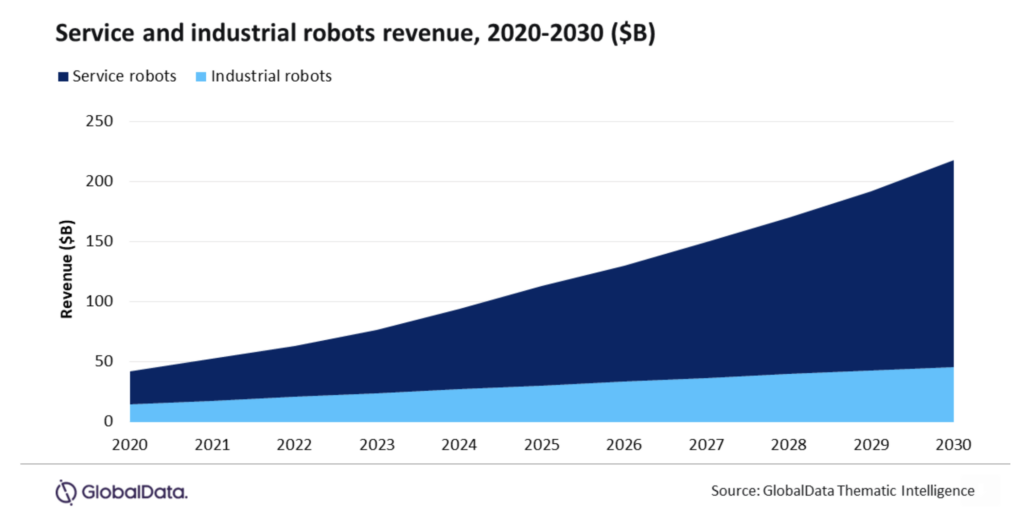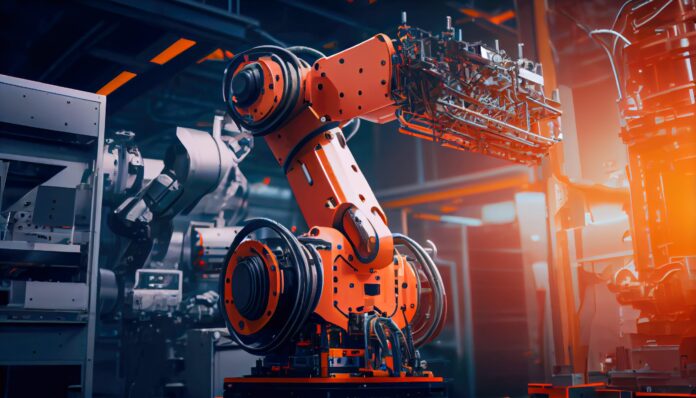New research says the market for service and industrial robotics will be worth $218 billion by 2030, with use cases multiplying “from shelf stacking to cleaning to manufacturing”, and crossing into “numerous sectors”, notably manufacturing, logistics, agriculture, healthcare, and defence. Analyst group GlobalData said the drive to automate manual activities with robots is down, in a major way, to “labour shortages and ageing populations”.
It noted “current developments” are also contributing; the Russia-Ukraine war has increased sales of military drones, and accelerated their capabilities. It said: “Ageing populations and low fertility rates in South Korea, Singapore, and Japan have incentivised the use of robots to meet gaps in the labour market. Tech wars between China and the US are also driving the robotics market as efficient, high-quality manufacturing becomes increasingly important.”
A graph (see below) puts the current revenue total at around $70 billion; the jump in the period to 2030 is around 300 percent. GlobalData estimates there are “already well over three million” industrial robots in use, and suggested the pace of installation is “increasing rapidly”, and that “use cases are proliferating”. It said: “An increasing number of surgeries are being carried out or assisted by robots; robots in warehouses are enabling high-efficiency logistics.

Isabel Al-Dhahir, senior analyst at GlobalData, said: “Advances in AI have enabled the development of robots, allowing them to become highly complex products rather than the stand-alone, fixed-function machines they used to be. This, in turn, has increased the number of roles that robots can perform. Cloud computing is central to this development to enable sensing, computation, and memory to be managed more rapidly, securely, and at scale.
“Robotics is impacting work by changing production lines and, in some cases, replacing human workers. Robot technologies such as co-bots and logistics robots are… turn(ing) factories into advanced engineering labs where assembly line(s)… are constantly analysed, streamlined, and improved. Unions, policymakers, and social scientists are concerned that automation will lead to high levels of unemployment, particularly if the economy cannot create higher-value jobs for those workers that robots will replace.”

